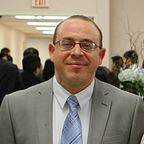A New Technology that Can Save Lives
Coronavirus (COVID-19) may cause thousands in this country to get sick and hundreds to die. Providing 100% of the US population with paid sick leave will save lives.
Better safe than sorry
I live in Texas near Dallas. (At the time of this writing) the nearest coronavirus patient is more than 1000 miles away. So why are people panicking? “有备无患,” (translation: Better safe than sorry) is what I’ve overheard people saying when discussing why others are wearing face masks at the supermarket. It doesn't matter that there are no confirmed cases of patients in Texas; it only matters that when they turn on the news they hear about how fast the virus is spreading.
The number of deaths from flu in the United States has likely already exceeded 10,000 this year and February isn’t even finished yet. Why is it then that less than half of all adults in the US received a flu shot in 2019? In the public’s estimation, some preventative methods (masks) are clearly more desirable than others (shots). Perhaps you are like one of many Americans who would prefer to use what the CDC calls “nonpharmaceutical interventions” to prevent infection. If you don’t like needles, do you know what the #1 most effective way to prevent the spread of disease is according to the CDC?
Paid sick leave is the #1 most effective way of preventing the spread of disease other than the use of vaccines. If you want to read an incredibly informative article on this topic from the New York Times I can’t recommend this one enough: The High Costs of Not Offering Paid Sick Leave.
An Ounce of Prevention
But if you are like 78% of Americans who live paycheck to paycheck, you can’t afford to stay home from work. In 2018, 34.2 million, or 29 percent of, private-sector workers did not have access to paid sick days. When we factor in public sector workers as well, more than 1 in 4 employees who live in one of the 40 states in the US that do not have mandated paid sick leave laws do not have this coverage. Clearly this issue affects a lot of people!
Has legislation solved this problem?
You might think that since a super majority of the public supports mandatory paid sick leave, it would be easy to pass legislation to enact a national standard. And you’d be wrong.
The Healthy Families Act was first introduced to the US congress in 2004 by Congresswoman DeLauro. It would require employers with fifteen or more workers to provide seven days of paid sick leave annually. It received more attention in 2009 with the rise of H1N1 (swine flu). It was reintroduced in subsequent years, and each time it went before Congress, the bill failed.
UPDATE 03/06/2020: The bill has been reintroduced for the 5th time but it was unable to clear the senate.
UPDATE 03/18/2020: H.R.6201 — Families First Coronavirus Response Act this bill signed into law still leaves more than 10 million US workers without coverage. It also doesn’t provide for any cost sharing of these benefits between employers and employees.
Due to the inability to pass legislation on the national level, grassroots movements have organized to pass legislation on the state and local level. Starting from 2006 with San Francisco and continuing till today, the National Paid Sick Days Coalition has resulted in more than ten million people gaining paid sick leave that did not have it a decade ago. Clearly, there has been progress on a state and local level, but not everyone considers the passage of this type of legislation to be progress.
Unfortunately, passing laws doesn’t always work. Recently grassroots movements in Texas have seen some pushback when business groups have sued their local city legislatures to stay mandatory paid sick leave ordinances:
- San Antonio paid sick leave requirement blocked by state judge
- State appeals court says Austin’s paid sick leave ordinance is unconstitutional
How can technology solve this problem?
When it comes to providing everyone with paid sick leave, the dialogue thus far has been between two camps that have all-or-nothing approaches to implementation. Does the employer pay for this benefit entirely, or are employees denied this benefit entirely? The responses by business groups in Texas in the past year have made it clear that all-or-nothing approaches don’t work. Passing laws that mandate employers to provide these benefits can only go so far.
Ideological all-or-nothing approaches to implementing paid sick leave have failed. If we want to prevent the spread of disease, we need 100% of the population covered.
If we want 100% coverage, we need to find a compromise that is easy to implement without passing any new laws.
Additionally, the solution should take less than a year to develop and it should deploy quickly in response to threats such as COVID-19. Can we build a technology that will solve this problem?
There is a solution and that solution is based on TandaPay.
